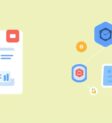
The role of a digital executive assistant is becoming ever more vital in today’s fast-paced business landscape. As professionals navigate mounting responsibilities, digital executive assistants are streamlining workflows, enabling sharper focus on strategic tasks, and enhancing productivity. In this article, you’ll discover what a digital executive assistant is, how to build and optimize one, features you should prioritize, concrete implementation steps, and emerging best practices shaping the future.
Why Every Executive Needs a Digital Executive Assistant
Modern executives juggle a complex tapestry of meetings, emails, strategic projects, and deadlines. With every minute at a premium, the risk of overload and missed opportunities is real. This is where the digital executive assistant proves indispensable. By automating repetitive duties, organizing schedules, and centralizing information, these digital helpers allow executives to focus on leadership and high-value decision-making. Adopting a digital executive assistant is, therefore, not just a convenience—it’s a strategic necessity for thriving in a digital-first world. With automation at their side, executives are better positioned to lead, innovate, and maintain their competitive edge.
What Is a Digital Executive Assistant?
A digital executive assistant is a technology-powered solution—often AI-driven or software-based—designed to automate and coordinate tasks usually handled by a human assistant. This includes everything from managing calendars and emails to handling travel arrangements and drafting routine documents. Core features include:
- Scheduling and Calendar Management: Automates finding meeting slots, sending invites, and rescheduling.
- Email Management: Prioritizes messages, drafts responses, and flags urgent correspondence.
- Task and Workflow Automation: Sets reminders, manages to-do lists, and streamlines repetitive processes.
- Information Gathering and Research: Quickly compiles relevant data and prepares briefing materials.
The result? Workflow streamlining, enhanced productivity, fewer errors, and faster response times. Executives gain more time and headspace to focus on what matters most.
For insights on real business benefits, see this productivity case study with a leading automation platform.
The Technology Behind Digital Executive Assistants
Building a robust digital executive assistant relies on integrating advanced AI and automation tools. At the core, natural language processing (NLP) technologies like OpenAI’s GPT series or Google’s BERT bring human-like conversational ability and contextual understanding. For speech-to-text and response synthesis, solutions such as Google Cloud Speech-to-Text and Amazon Polly offer seamless transitions between spoken and written tasks.
Workflow automation platforms like Zapier, Microsoft Power Automate, and IFTTT connect your assistant to your existing business tools, allowing routine scheduling, notifications, and information retrieval. Many organizations also tap into APIs from platforms like Google Calendar, Slack, and Trello, ensuring meetings and tasks are always up to date.
Security remains paramount. Authentication protocols (such as OAuth) and strong encryption ensure that confidential executive data is always protected. By harnessing these technologies, organizations create digital assistants with robust, secure functionality tailored for executive support.
Step-by-Step: How to Build Your Own Digital Executive Assistant
Setting up a digital executive assistant tailored to your workflow can be achieved in just a few focused steps:
- Identify Core Needs: List the top tasks for automation—calendar management, email sorting, reminders, meeting summaries, and information gathering.
- Choose Your Platform: Select user-friendly suites such as Microsoft 365, Google Workspace, or dedicated automation tools like Zapier, Notion AI, or Motion.
- Set Up Integrations: Connect important apps (email, calendar, notes, task manager) to your chosen platform—this may involve simple permissions and a few clicks.
- Create Automated Workflows: Configure automations like daily agenda emails, auto-scheduling, or meeting transcription using drag-and-drop workflow builders.
- Activate and Test: Turn on workflows and verify via test runs—fine-tune settings to ensure instant, correct responses.
- Refine and Expand: As needs evolve, add new automations and check platform analytics for performance optimization.
With these simple steps, you’ll quickly build a digital executive assistant that enhances personal productivity and keeps you laser-focused on high-value activities. For a practical beginner’s guide, you may want to check out this tutorial on getting started.
Key Features: What to Look for in a Digital Executive Assistant
Not all executive assistants are created equal. The most effective digital solutions offer features that save time, keep you organized, and optimize productivity. Here’s what to prioritize:
- Smart Scheduling: Automated meeting selection, invitation management, and real-time conflict resolution.
- Reminders: Intelligent notifications for upcoming tasks, deadlines, and recurring commitments to prevent missed opportunities.
- Communication Management: Centralized interface for messages and emails with prioritization, quick replies, and automated sorting features.
- AI-Driven Suggestions: Proactive, data-informed recommendations for meeting times, urgent tasks, and follow-up actions.
Choosing a digital executive assistant equipped with these features accelerates workflow and maximizes your available bandwidth for strategic work.
If you’re interested in platform options with these features, view this feature rundown.
Maximizing Efficiency: Automation Strategies for Digital Executive Assistants
To extract the greatest value from your digital executive assistant, it’s important to automate wisely. Start by mapping out the repetitive tasks that soak up time—like handling routine emails, scheduling, or entering data. Most digital assistants allow you to automate these functions directly within their settings and recommended workflows.
Take advantage of third-party integrations (Slack, Trello, Google Drive) to centralize communications and minimize manual switching between apps. For every automated workflow, define clear triggers (like “invoice received”) and explicit outcomes (like “forward to accounting and archive”). Regularly review usage reports, fine-tuning your workflows to eliminate inefficiencies or catch errors early.
Security should never be an afterthought. Whenever personal or business-sensitive information is involved, enforce strict permissions and privacy standards across all integrations.
Begin by implementing simple reminder automations or recurring reports, then scale gradually, progressively integrating more complex, multi-step automated processes as you get comfortable with your assistant’s capabilities.
For deeper insight into building out robust multi-tasking assistants, consider reading this step-by-step guide to multi-task agents.
Best Practices & Emerging Trends in Digital Executive Assistance
To leverage your digital executive assistant most effectively and stay ahead of the curve, follow these proven best practices:
- Proactive Organization: Anticipate executive needs with tightly managed calendars, clear communications, and automated reminders for routine responsibilities.
- Use Secure, Cloud-Based Tools: Opt for platforms with encrypted messaging, secure document handling, and compliance with data policies.
- Maintain Clear Communication: Regular updates and summarized action points prevent miscommunication and ensure no priority is overlooked.
- Automate Repetitive Tasks: Adopt AI-powered schedulers, automated email filters, and smart document management systems to cut down on manual work and errors.
- Commit to Continuous Learning: Stay up to date on the latest tools, apps, and strategies via webinars and industry networks.
Emerging Trends:
- AI-Driven Assistance: Advanced AI assistants can now handle complex scheduling, analyze communication sentiment, and prioritize tasks intuitively.
- Deep Integration with Collaboration Tools: Seamless connections with Slack, Microsoft Teams, and Zoom streamline coordination and facilitate real-time document sharing.
- Voice Commands and NLP: Voice-activated digital assistants are delivering hands-free scheduling, note-taking, and smart search.
- Remote and Hybrid Support: Virtual, globally accessible digital executive assistant roles now offer 24/7 support across time zones.
- Real-Time Data Analytics: Advanced assistants are beginning to provide executives with actionable insights—highlighting workflow bottlenecks, productivity trends, and optimization opportunities.
By applying best practices and staying alert to new capabilities, the digital executive assistant becomes not just a support tool, but a strategic asset—reshaping productivity, focus, and the entire executive support ecosystem.
Ready to optimize your workflow and unlock peak efficiency? With the right digital executive assistant, you’re set to lead in the digital age—focused, organized, and future-ready.






